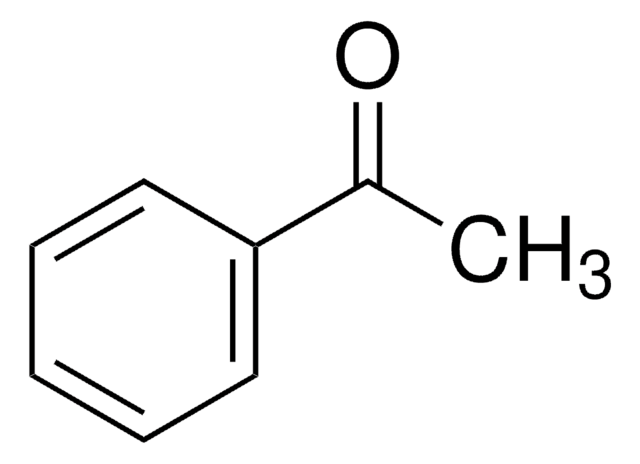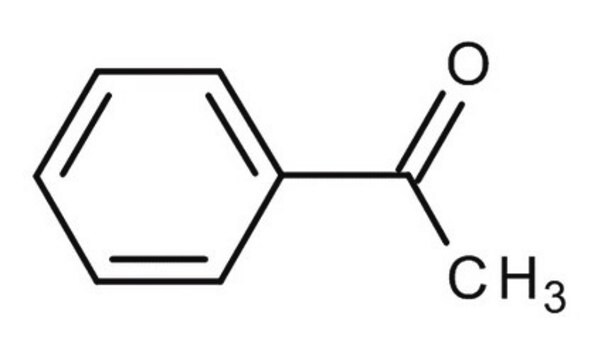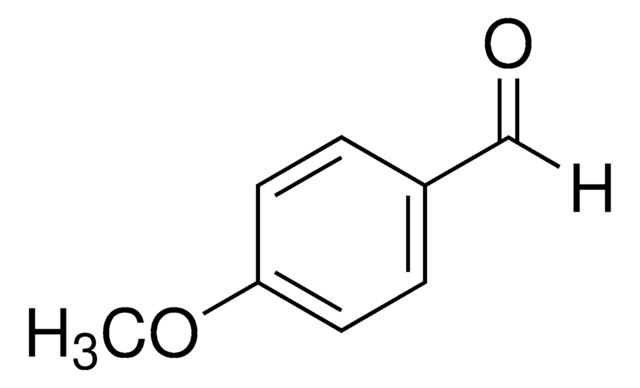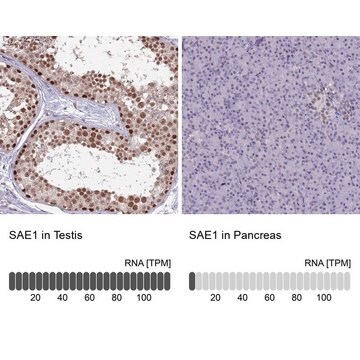Kluczowe dokumenty
W200910
Acetophenone
natural, 98%, FG
Synonim(y):
Methyl phenyl ketone
About This Item
Polecane produkty
pochodzenie biologiczne
cassia oil
klasa czystości
FG
Fragrance grade
Kosher
natural
agency
follows IFRA guidelines
zgodność regionalna
EU Regulation 1223/2009
EU Regulation 1334/2008 & 178/2002
FDA 21 CFR 117
gęstość pary
4.1 (vs air)
ciśnienie pary
0.45 mmHg ( 25 °C)
1 mmHg ( 15 °C)
Próba
98%
Formularz
liquid
semisolid
temp. samozapłonu
1058 °F
charakterystyka ekologicznej alternatywy
Less Hazardous Chemical Syntheses
Use of Renewable Feedstocks
Learn more about the Principles of Green Chemistry.
sustainability
Greener Alternative Product
współczynnik refrakcji
n20/D 1.534 (lit.)
bp
202 °C (lit.)
mp
19-20 °C (lit.)
gęstość
1.03 g/mL at 25 °C (lit.)
Zastosowanie
flavors and fragrances
Dokumentacja
see Safety & Documentation for available documents
alergen pokarmowy
no known allergens
alergen zapachowy
no known allergens
kategoria ekologicznej alternatywy
Organoleptyczne
almond; cherry; coumarin; nutty; sweet; vanilla
ciąg SMILES
CC(=O)c1ccccc1
InChI
1S/C8H8O/c1-7(9)8-5-3-2-4-6-8/h2-6H,1H3
Klucz InChI
KWOLFJPFCHCOCG-UHFFFAOYSA-N
Szukasz podobnych produktów? Odwiedź Przewodnik dotyczący porównywania produktów
Opis ogólny
Hasło ostrzegawcze
Warning
Zwroty wskazujące rodzaj zagrożenia
Zwroty wskazujące środki ostrożności
Klasyfikacja zagrożeń
Acute Tox. 4 Oral - Eye Irrit. 2
Kod klasy składowania
10 - Combustible liquids
Klasa zagrożenia wodnego (WGK)
WGK 1
Temperatura zapłonu (°F)
179.6 °F - closed cup
Temperatura zapłonu (°C)
82 °C - closed cup
Wybierz jedną z najnowszych wersji:
Masz już ten produkt?
Dokumenty związane z niedawno zakupionymi produktami zostały zamieszczone w Bibliotece dokumentów.
Nasz zespół naukowców ma doświadczenie we wszystkich obszarach badań, w tym w naukach przyrodniczych, materiałoznawstwie, syntezie chemicznej, chromatografii, analityce i wielu innych dziedzinach.
Skontaktuj się z zespołem ds. pomocy technicznej






